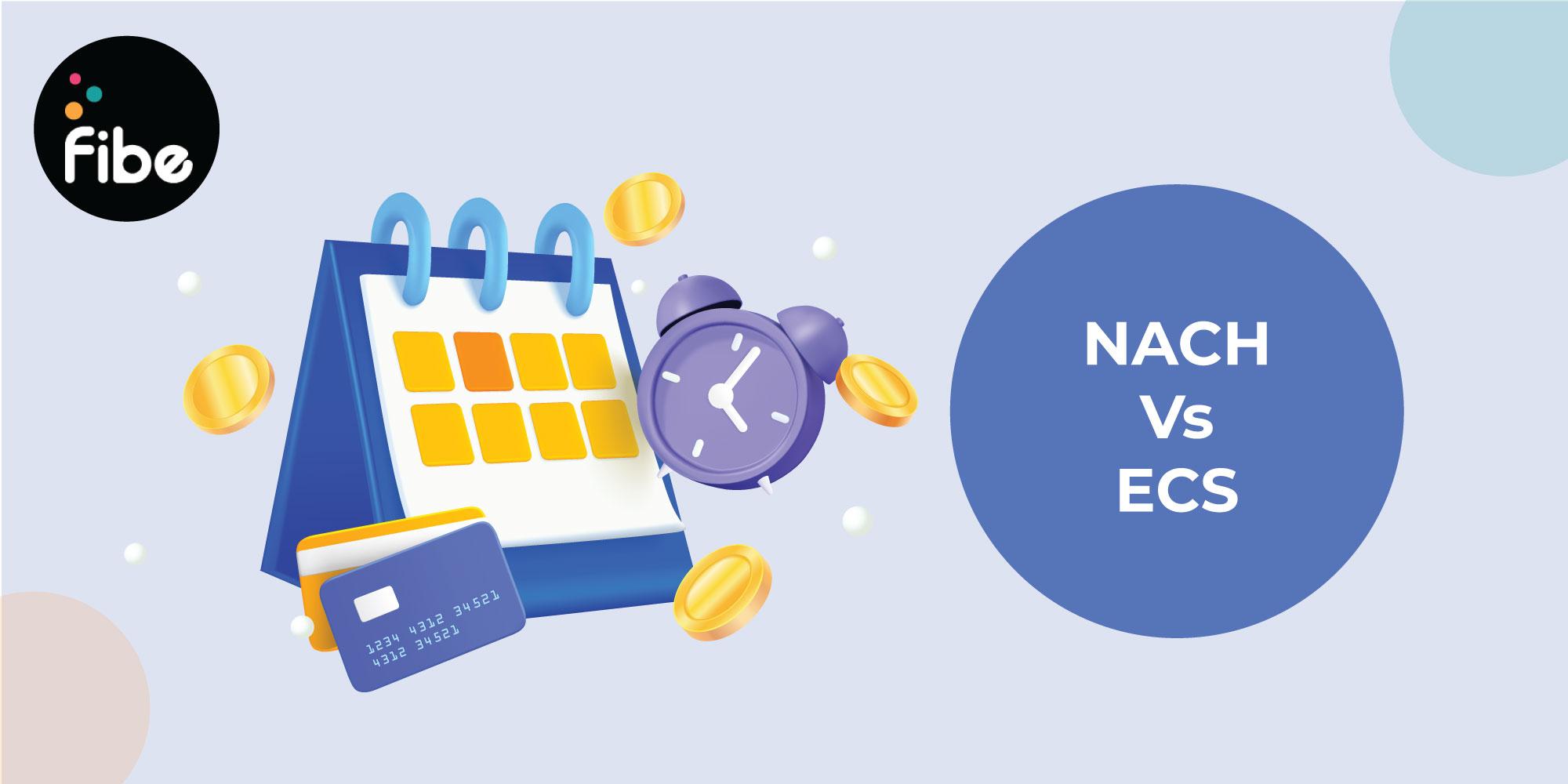
The importance of understanding the difference between NACH and ECS is growing as the nation moves towards digital payments. Among the many modes of electronic transfers, these are two of the most popular options.
Many companies, banks, financial institutions and merchants use ECS and NACH to receive and make payments. These options also allow automatic deduction from your bank account. While both have similar functions, knowing the difference between NACH and ECS will help you know which one to choose at the right time.
Read on to know what ECS and NACH are, how they work, their differences and more.
Electronic Clearing Service or ECS is a fund transfer facility launched by the RBI that makes it easier to send and receive funds. There are two types of Electronic Clearing Services (ECS) transactions:
Institutions use this facility to make bulk transfers of funds raised through a single debit. For example, a bank credits profit or an employer credits salary through ECS.
Opposite to credit, ECS debit is useful for collecting funds from multiple bank accounts. For example, lenders can use this to collect loan EMIs on a fixed date from multiple borrowers.
Generally, ECS is useful in making bulk payments, such as pension distribution, salary credit, insurance premium collection, tax collection, EMI payment and more.
However, it has manual processes and can take 30 days for activation, which may be time-consuming and not ideal in certain circumstances.
ECS is a digital payment method that requires manual input to transfer funds between bank accounts. To make a fund transfer using an ECS, the bank or merchant must collect the bank account details of the customer and obtain consent from the bank.
Users can then submit the mandate to the bank and after the bank processes the request, the funds will be transferred through the clearing house.
National Automated Clearing House or NACH is a web-based clearing service that allows bulk fund transfer. It is especially useful for recurring payments, such as EMIs, salaries, pensions, subsidies and more.
NACH is responsible for clearing all ECS payments and has, over time, replaced ECS, as it allows transfers without geographical restriction. It also offers the facility of automatic payment, among many other benefits.
Similar to ECS, there are two types of NACH transactions:
With NACH Credit, users can make 10 million transactions in a day without any hassle.
Financial institutions can accept a large number of payments from customers and generate Unique Mandate Reference Numbers for easy tracking.
NACH is a secure and centralised digital payment system introduced by NPCI and used by government entities, financial institutions and many companies. With NACH, you can easily set up automated payments from your net bank account for EMIs, subscriptions, investments, etc.
After verification by the bank, NPCI and the recipient bank account, the payment gets deducted automatically per the set mandate.
Here are some key points of difference to help you decide between NACH vs ECS:
ECS fund transfer is available only within select centres operated by commercial banks and the RBI. In contrast, NACH allows fund transfers across the country.
While NACH allows credit and debit tractions, ECS is primarily used for credit transactions.
The presentation and settlement process for NACH takes 1 day, while ECS may take 3 to 4 days.
With ECS, the activation process takes 30 days, while NACH reduces the activation time to 10 days.
While both ECS and NACH allow fund transfers, only NACH offers a dispute management system.
NACH generates a Unique Mandate Registration Reference Number for easy payment tracking, while ECS does not.
In conclusion, ECS and NACH make it easy to complete payments on time and without much hassle. To make your transactions seamless and stress-free, you can also rely on credit cards. The Fibe Axis Bank Credit Card is one such card that offers quick and safe transactions.
With this card, you enjoy a UPI linking facility to make quick and easy transactions. You also get a host of other benefits, such as cashback of up to 3%, tap and pay features and more. Download the Fibe App or register on our website and apply today.
NACH has a few advantages over ECS as it is available over a wider banking network in India. Further, NACH is better suited to recurring payments because ECS requires manual processing. Another key advantage of NACH is that its presentation and settlement take just 24 hours, while ECS takes 3-4 days.
ECS refers to Electronic Clearing Service, a mode of making transactions. On the other hand, a mandate is the document you need to furnish to use the ECS facility.
The two types of ECS transactions – credit and debit. While ECS credit allows the bulk transfer of funds into the recipient’s bank accounts, ECS debit allows the collection of funds from several bank accounts.
The full forms of ECS and NACH are Electronic Clearing Service and National Automated Clearing House, respectively.
ECS return charges are not fixed and differ from one financial institution to another.